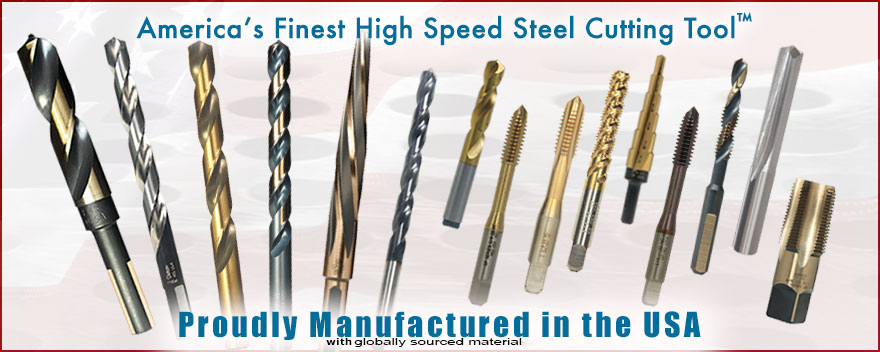
Consolidated Toledo Drill
PRODUCT CATALOG >> M42 Cobalt Jobber Length
M42 Cobalt Jobber Length

135° Split point for fast penetration & accurate starting
without center punch.
Cobalt drills — require rigidly held positive feed drilling equipment.
Manufactured from M42 high speed steel contains 8% cobalt increasing hot hardness.
Recommended use to drill hard tough metals, free machining stainless steel, titanium alloys and certain abrasive plastics.
![]()
Titanium Nitride — M42 Cobalt

135° Split point for fast penetration & accurate starting
without center punch.
Titanium Nitride coating for lubricity and extended tool life.
Cobalt drills — require rigidly held positive feed drilling equipment.
![]()
Titanium Aluminum Nitride — M42 Cobalt

135° Split point for fast penetration & accurate starting
without center punch.
Titanium Aluminum Nitride can be used in machining stainless steel, nickel based and titanium alloys, NOT Recommended for Aluminum.
Designed for use where extreme temperatures are found, allows for increased machining speeds up to 200%.
Manufactured to NAS 907J specifications.
![]()
METRIC — M42 Cobalt 135° Split point

135° Split point for fast penetration & accurate starting
without center punch.
Cobalt drills — Require rigidly held positive feed drilling equipment.
Manufactured from M42 High Speed Steel contains 8% cobalt increasing hot hardness.
Manufactured to NAS 907J specification.
![]()
What Are the Benefits of High Speed Cobalt?
There are many great reasons to consider using a cobalt steel alloy. These are some of the key characteristics of these alloys:
Superior Red Hardness: The addition of cobalt can bring the Rockwell hardness up to 70 Min. Notably, these alloys perform especially well at high heats, maintaining their hardness and usability in production environments.
Heat and Abrasion Resistance: Similarly, high speed cobalt tends to perform very well in terms of heat and abrasion resistance. These characteristics are the main reasons why people choose high speed steel. With the improvements of cobalt steel, the advantages are only compounded.
Shorter Cycles: The above characteristics add up to one very important practical benefit: shorter cycle times. Tools made with these alloys can be run longer with less maintenance. That means cost savings for industrial applications.